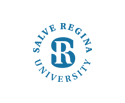Abstract
Much like other libraries and institutions across the United States, Salve Regina faces its share of efficiency problems. In turn, these problems add to the many environmental issues we face today. These are mostly paper waste, recycling, or lack thereof, and the amount of energy needed to heat buildings. Notwithstanding the excessive consumption and waste, our group focused on transportation. The main goal of this project was to measure the current transportation costs and explore ways to cut carbon emissions. By sending a questionnaire through email, the staff responded with the type of vehicle they drive and their commuting distance. Most of the staff lives in state but the issue of commuting still has a large impact on the environment. Each gallon of burned gasoline products produces 19.4 pounds of carbon dioxide (EPA). Using the staff’s statistics, we found that 15,180 pounds of carbon dioxide is released by the staff weekly just by driving to work. Also, only a handful walk or bike to work and nobody takes public transportation. In conclusion, we found that the library can greatly reduce their carbon emissions by driving less, driving more fuel efficient vehicles, and utilizing public transportation. The most beneficial recommendation we have is to use public transportation. We understand that people enjoy driving their cars for a variety of reasons but environmentally, this would make an enormous difference. Maybe the library director could come up with some incentives to get staff members to take the bus instead of driving, for example, a free lunch at Miley cafeteria.
Recommended Citation
Giambusso, Elizabeth; Hanrahan, Timothy; and Raab, Raine, "The Costs of Transportation at McKillop Library" (2009). BIO140 Carbon Footprint Project. 4.
https://digitalcommons.salve.edu/bio_proj/4
PowerPoint presentation
Included in
Rights Statement
In Copyright - Educational Use Permitted. URI: http://rightsstatements.org/vocab/InC-EDU/1.0/
This Item is protected by copyright and/or related rights. You are free to use this Item in any way that is permitted by the copyright and related rights legislation that applies to your use. In addition, no permission is required from the rights-holder(s) for educational uses. For other uses, you need to obtain permission from the rights-holder(s).


